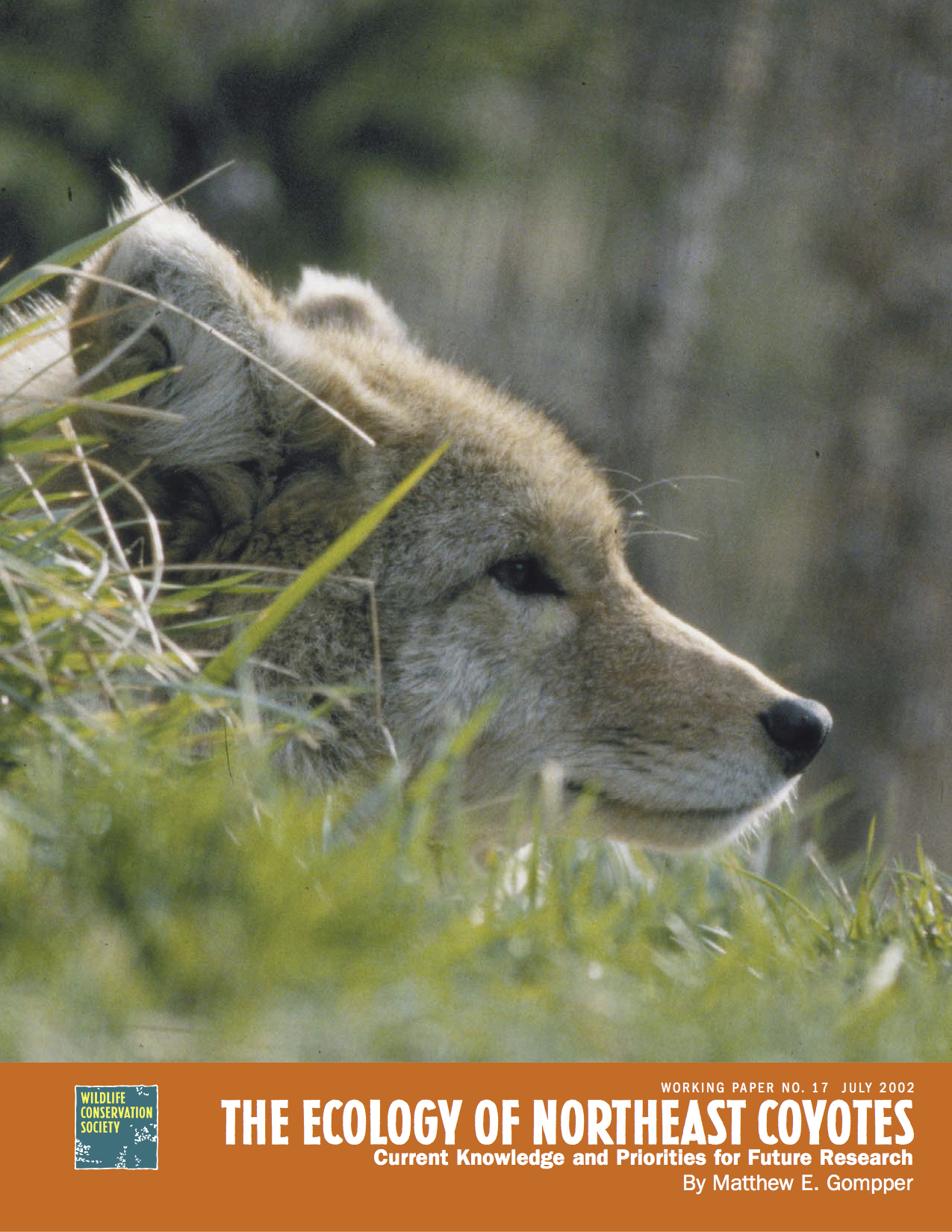The Ecology of Northeast Coyotes - Current knowledge and priorities for future research

© WCS. Photo by E. Dickstein.
Abstract
When Europeans first settled North America, wolves and puma dominated the large-predator community of the eastern deciduous forests. The coyote was a resident of the Great Plains and western North America and was unknown to settlers of the east. These days, puma are virtually extirpated east of the Mississippi, and aside from a handful of red wolves reintroduced in the southeastern United States and possibly an occasional transient gray wolf in the Northeast, wolves are also effectively absent. In contrast, coyotes are now found from Nova Scotia to Florida and exist at high enough population densities in virtually every region to have become an important component of the ecological community. Therefore a solid understanding of coyote ecology is necessary for conservation planning at many levels. This paper summarizes what is known of the ecology of coyotes in northeastern North America (including New England, New York and Canada east of the Ontario-Québec border), and identifies areas of research requiring immediate attention. While much is known regarding coyote natural history and ecology in this region, there are also major gaps in our knowledgebase. In particular, four aspects of coyote ecology are suggested as priorities for future research: The demographics and growth rates of the northeastern coyote populations. The role of northeastern coyotes in structuring communities. The important parasites and diseases of northeastern coyotes. The impact of wolf-coyote hybridization on the population genetics and ecology of northeastern coyotes. A focus on these research areas will allow for informed management decisions in the face of an array of conservation priorities in the Northeast.
